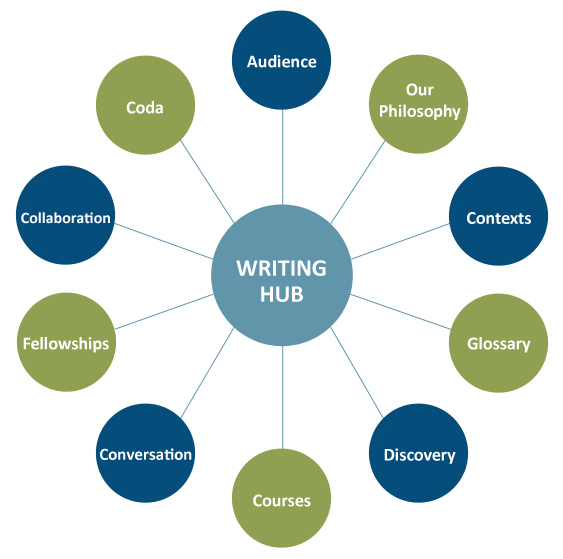DISCOVERY
"A discovery is, as the very word implies, a change from ignorance to knowledge…"
Aristotle, Poetics, XI.30
In the Writing Hub, blended teaching and learning modes are used to maximize students’ opportunities for deep learning. We use the process of invention or what we term discovery, following Aristotle and George Pullman (1994), to help students navigate between these modalities. From the outset, students base their assignments on topics that are of interest and therefore more personally meaningful. This increases their motivation and productivity while also heightening their sense of individuation. Discovery begins when students start to explore possible questions and arguments relating to their topic in computer-assisted freewriting sessions, peer-review activities, and reflective writing.
Discovery of these chosen topics continues in the form of further hermeneutical and heuristic invention technologies to stimulate thought, questions, and ideas. Students collaborate in pairs and groups and apply a Socratic lens to their ideas, subjecting them to dialectical scrutiny. These metacognitive strategies extend outside the classroom into online discussion forums and journals where students showcase their ideas to the larger cohort for peer critique.
The process of discovery, invention, reflection, and revision continues as our students work through in-class activities and formal assignments to engage in the purposeful pursuit of knowledge and enhance deep learning. They not only electronically submit assignments they create in Word, PowerPoint, and equivalent programs through Blackboard, the university’s learning management system, but they also conduct most of their research online. Although physical, text-based research also allows students to conduct preliminary research efficiently and quickly, the cognitive effort required during the electronic reading and writing involves students in critical evaluation practices that refine their ability to monitor and reflect on the information they learn from sources (Zumbach, 2006, pp. 415-417).

